10 Major Ports In India
23/07/2021Covering a majority of the Indian subcontinent, India is an Asian country that is at the heart of trade across vital shipping routes.
It is surrounded by water on 3 sides and is flanked by the Bay of Bengal to the East, the Arabian Sea to the West, and the Indian Ocean to the South.
It has a coastline of over 7,000 kilometres, and one of the largest Exclusive Economic Zones (EEZ) in the world. The primary ports in India are 13 major harbours that are well connected and have state-of-the-art facilities.
Most ports in India are wholly government-owned, under the Ministry of Ports, Shipping, and Waterways. Individual terminals and facilities may be operated by private organizations.
A large portion of the terminals in India is operated by companies such as DP World (including the erstwhile P&O), AP Moller Terminals, and PSA International. The few private ports are owned by Reliance Industries and the Adani Group.
As it lies on the Indian Ocean, these ports service vessels inbound from the Middle East, Europe, and Africa to the West. The main vessels from the East sail from South East Asia, Japan, South Korea, and Australia.
A large portion of incoming trade from the East is oil, inbound from Iran and the Middle East. Agricultural produce, fertilizers, natural ores and minerals, automobiles, textiles, and foodstuff are the primary goods that pass through Indian ports. There are also several naval bases operated under the individual Indian Naval Commands.
Given its vast maritime importance, India ports have played a major role in the growth and development of the nation. In this article, we look at the top 10 ports of India.
The UN/LOCODE, region and state, gross cargo tonnage, and gross TEU traffic of the ports are also mentioned. The Locode begins with the prefix IN- (for India) indicating a port located within the territorial waters of India.
1. Jawaharlal Nehru Port Trust – Nhava Sheva (JNPT)
Navi Mumbai, Maharashtra
UN/LOCODE: IN-NSA
Gross Cargo Tonnage (2019-20): 68.5 million metric tons
TEU Traffic (2018-19): 5.15 million units
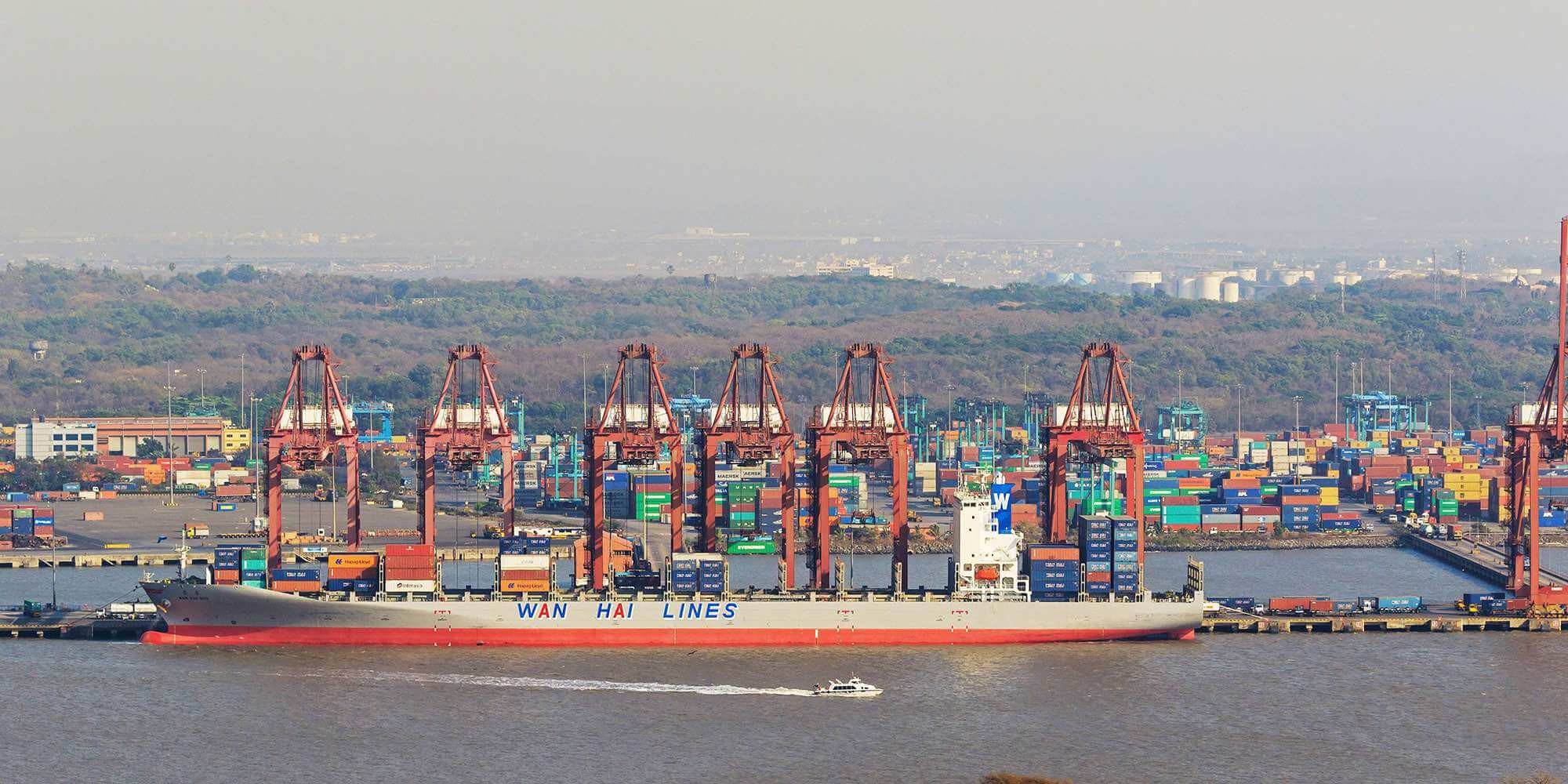
Known as Nhava Sheva, JNPT is the largest container port in India and one of the most important harbours on the Western coast of the subcontinent. The name comes from the 2 erstwhile villages that thrived on the shores of the Thane Creek, where JNPT now stands.
Opened in 1989, it processes nearly 55% of the total container cargo passing through India. It has consistently crossed 4 million TEUs annually and aims to reach the 10 million mark by 2021.
The major exports through JNPT include textiles, machinery, meat, chemicals, and pharma products. Plastics, machinery, edible oils, aluminium, and non-ferrous metals are the imports through here.
JNPT is ranked 28th amongst the world’s top container ports. The facilities include a customs house, connection to over 50 Inland Container Depots (ICDs), and 30 Container Freight Stations (CFS).
There is also an ongoing project of adding JNPT to the Western Dedicated Freight Corridor (W-DFC) that will increase road and rail connectivity. Construction of a Multi-Modal Logistics Park (MMLP) is also underway. JNPT operates a satellite port at Vadhvan Point to ease traffic from the main harbour.
At present, the port operates several container terminals. The JNPT Container Terminal is wholly owned by JNPT and has 680 meters of quay spread across 3 berths.
Nhava Sheva International Container Terminal (NSICT) is run by DP World and was the first privately managed terminal in India. It has 600 meters of quay over 2 berths and a capacity of 62 million tons of cargo.
The Gateway Terminals India (GTI) run by AP Moller Terminals can handle 1.3 million TEU and was opened in 2006. Lastly, the NSIGT terminal operated by PSA Singapore is currently under construction and will have 2 kilometres of the quay, and a capacity of 12.5 million tons of cargo, and 4.8 million TEUs.
2. Port of Mundra
Kutch, Gujarat
UN/LOCODE: IN-MUN
Gross cargo tonnage (2019-20): 139 million metric tons
TEU Traffic (2016-17): 3.48 million units
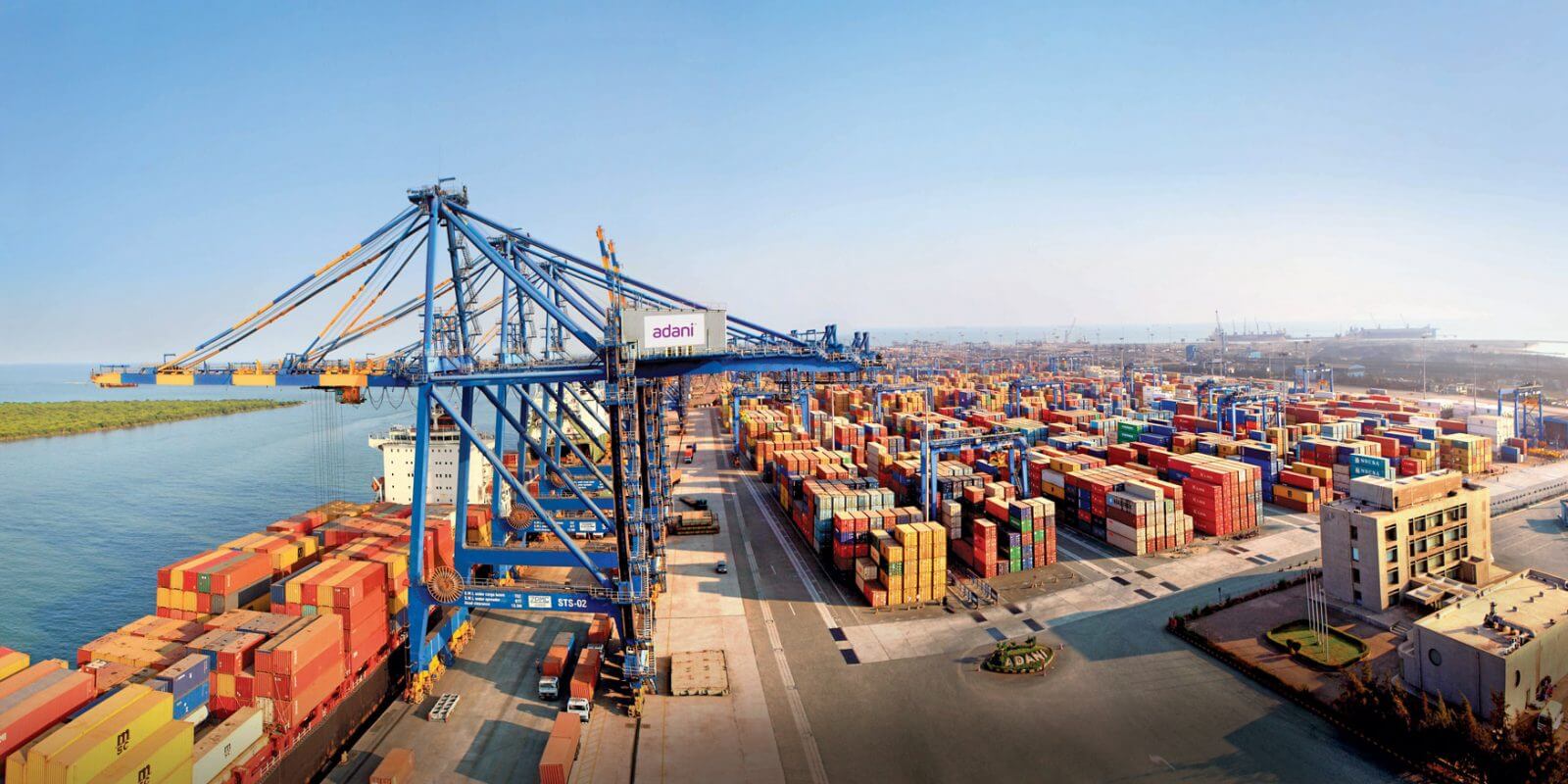
As the largest private port in India, Mundra is a major hub for containers and bulk cargo. It is run by the Adani Ports and SEZ Limited (APSEZ) and began operations in 2001.
It is well connected to the major hubs in India. The Mundra-Adipur railway line and the 8A Extn National Highway provide road and rail connectivity.
Mundra Airport is undergoing major developments to convert it to an international airport for air cargo. At present, the port can handle 5 million TEUs and 338 million metric tons of cargo.
The port operates 10 berths for dry bulk, 3 for liquid bulk, 6 container berths, 3 mechanized import berths, and 2 for SPM crude oil imports.
The Mundra Port Coal Terminal (MPCT) is the largest coal import terminal in the world and can process over 40 million tons of coal annually. The port also handles 3 major pipelines- IOCL Panipat, the Bathinda refinery line, and the National Capital Region (NCR) line. There is on-site storage for agricultural goods, machinery, coal, and other industrial goods.
There are dedicated facilities for handling products such as wheat bagging units, coal processing stations, 97 holding tanks for liquid cargo, and a steel handling yard.
The major shipments passing through here include fertilizers, agricultural produce, liquid bulk, crude oil, chemicals, edible oil, coal, automobiles, project cargo and minerals. There are dedicated facilities for general cargo, such as 16 mobile harbour cranes, 7 grab ship unloaders, payloaders, excavators, conveyor belt systems etc. The container terminals have 9 dock lines, over 2 kilometres of the quay, 18 rail-mounted cranes, and 48 gantry cranes.
3. Port of Chennai
Chennai, Tamil Nadu
UN/LOCODE: IN-MAA
Gross cargo tonnage (2019-20): 51.8 million metric tons
TEU Traffic (2018-19): 1.62 million units
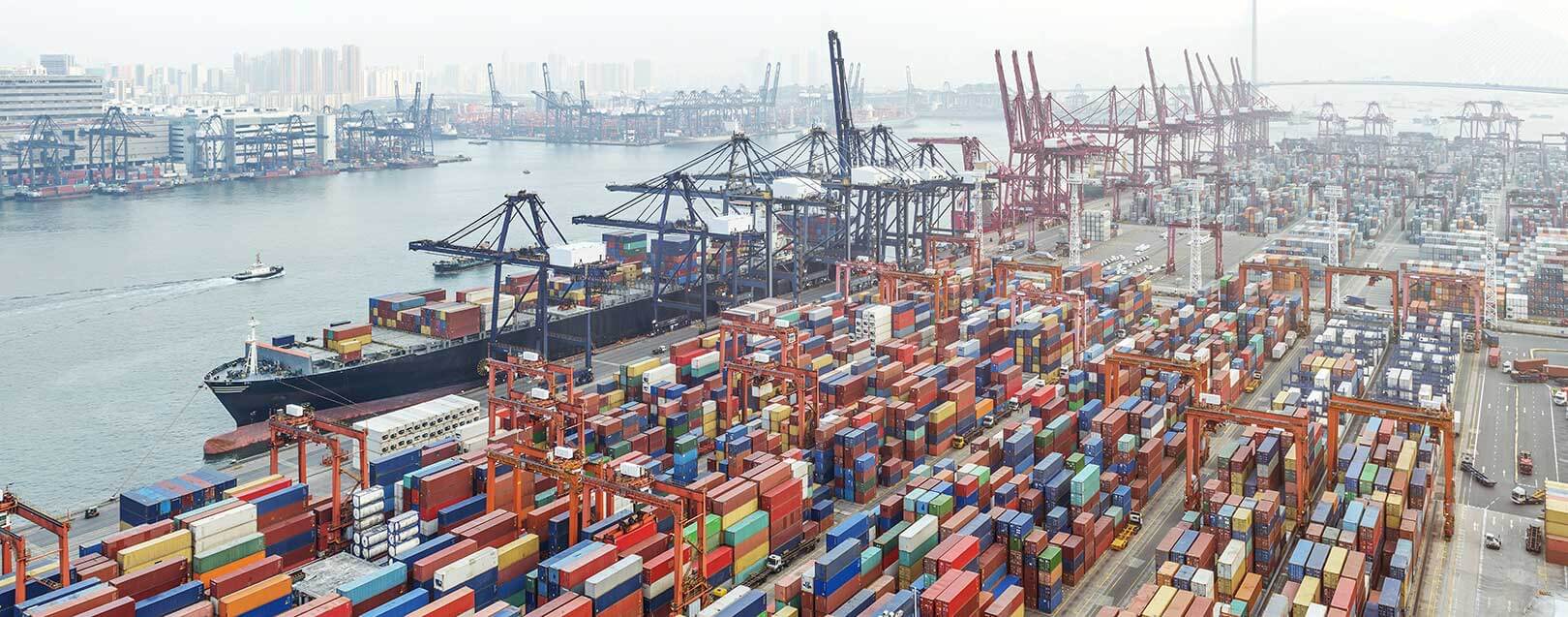
The erstwhile Madras Port is the largest port on the Bay of Bengal coastline and ranked 2nd behind JNPT in terms of container thoroughfare in India. Operational since 1881, the port has been a driving force behind trade and commerce in the region, and is known as the “Gateway of South India”. It is directly linked to over 50 ports, has ISPS and ISO 14001:2004 certifications, and is ranked 86th worldwide in terms of TEU handling. It is managed by the Chennai Port Trust.
As an artificial seaport on a coastal breakwater, the harbour covers nearly 4 sq. kilometres. The main shipments through here are automobiles, motorcycles, general industrial cargo, iron ore, granite, coal, fertilizers, petroleum products, and agricultural produce. The major exports are iron, leather, cotton, textiles, and automobiles.
The major imports are wheat, raw cotton, machinery, iron, and steel. This port currently handles over 50 million tons of cargo, and expansion is underway to increase the capacity to 140 million tons. The existing container handling capacity is 2 million TEUs. Automobiles are a major shipment here, and the port has seen an exponential increase to over 0.3 million units in 2018-19.
The port is classified into the North, Central, and South zones that have 26 berths. The dock is divided into the Ambedkar Dock with 12 berths, the Satabt Jawahar Dock with 6 berths, the Bharati Dock with 3 oil and iron berths, the container terminal with 3 berths, and the single mooring berth.
The Jawahar berths also have attached sheds for transit, while the CT-1 and CT-22 container berths have container freight stations (CFS). The Bharati Dock can process Suezmax and Post-Panamax vessels. The container terminals are run by DP World and PSA International, and services shipping lines including APL, Maersk, and NYK. There is also a cruise terminal within the port, the first in India, and is currently under expansion work.
4. Port of Kolkata – Syama Prasad Mookerjee Port Trust (KoPT)
Kolkata, West Bengal
UN/LOCODE: IN-CCU
Gross cargo tonnage (2018-19): 63.71 million metric tons
TEU Traffic (2018-19): 0.83 million units

As one of the largest riverine ports in India, KoPT is located 200 kilometres inland and is the oldest port in operation. It is a homogenous freshwater port that is located on the river Hooghly. The port services most of Northern and Eastern India, and even to neighbouring countries such as Nepal, Bhutan, Bangladesh, and the Autonomous Region of Tibet. It has been in use since the early 16th century and receives a sizeable portion of shipments to the North-Eastern states.
The port is divided into the Kolkata Dock System (KDS) and the Haldia Dock Complex (HDC). The KDS lies on the left bank and is manned by the Gasper and Saugor pilotage stations. The Kidderpore docks run 18 berths and 3 dry docks, the Netaji Subhas docks run 10 berths and 2 dry docks, the Budge Budge dock has 6 wharves for petroleum, and the main anchorages are at Diamond Harbor, Saugor Road, and the Sandheads. In addition, there are over 80 jetties and docks for ship breaking.
The HDC is located 60 kilometres from the pilotage stations and consists of an impounded dock system with 12 berths, 3 riverine jetties for oil, 3 jetties for barges, jetties for oil handling barges, and the Haldia Anchorage for Lighter Aboard Ship (LASH) vessels.
The dry docks at KoPT are the largest in India and can handle smaller ship construction, and repairs for most vessels. Due to the location, pilotage is required for ships over 200 GT. There are also lighthouses, light vessels, semaphores (for tide levelling), and other mechanisms to guide incoming vessels.
5. V. O. Chidambaranar Port (VOCP)
Tuticorin (Thoothukudi), Tamil Nadu
UN/LOCODE: IN-TUT
Gross cargo tonnage (2019-20): 36 million metric tons
TEU Traffic (2019-20): 0.8 million units
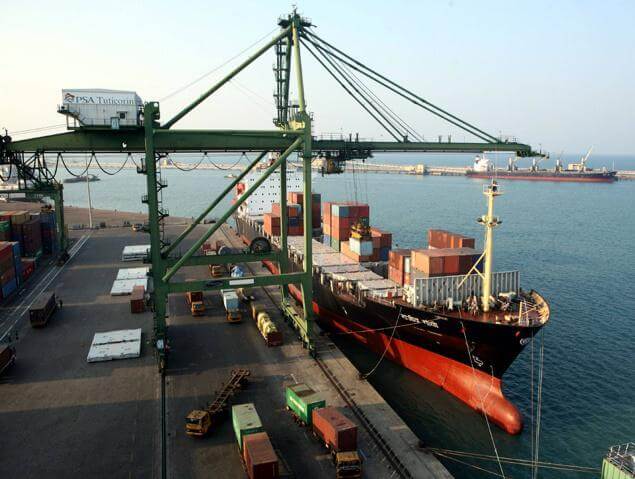
Known as the Tuticorin Port, VOCP is a major seaport in India, located to the South of the mainland. It is classified as a medium artificial harbour spanning nearly 8 sq kilometres. Operated by the VOCP Trust, it is the 4th largest container terminal in India, and the second in the state. This port services vessels from China, Europe, Sri Lanka, the Mediterranean, and the USA. It is certified ISO 9001:2008 and ISO 14001:2004 and is ISPS Compliant.
The main shipments include industrial raw material and agricultural produce. The primary imports are coal, cement, fertilizers, phosphate, petroleum and derivatives, coke, and edible oils. The main exports are general cargo, raw ore and minerals, building materials, sugar, liquid cargo, sugar, granite, and limonite. Due to its location near on the Coromandel Coast in the Gulf of Mannar, it is naturally sheltered. The 2 breakwaters span over 7 kilometres and are spaced 1.3 kilometres apart.
There are 14 berths, of which the container berth is managed by PSA International. There are extensive storage spaces within the port and there is also a cruise terminal nearby for passengers. This port handles over 7% of gross container traffic to India and is currently under a USD 1 billion expansion project. The existing inner harbour will be expanded to form an outer harbour as well. There is also a proposal to set up a naval base under the Eastern Naval Command.
6. Port of Kandla (Deendayal Port Trust)
Kandla, Gujarat
UN/LOCODE: IN-KDL
Gross cargo tonnage (2019-20): 122.5 million metric tons
TEU Traffic (2017-18): 0.17 million units
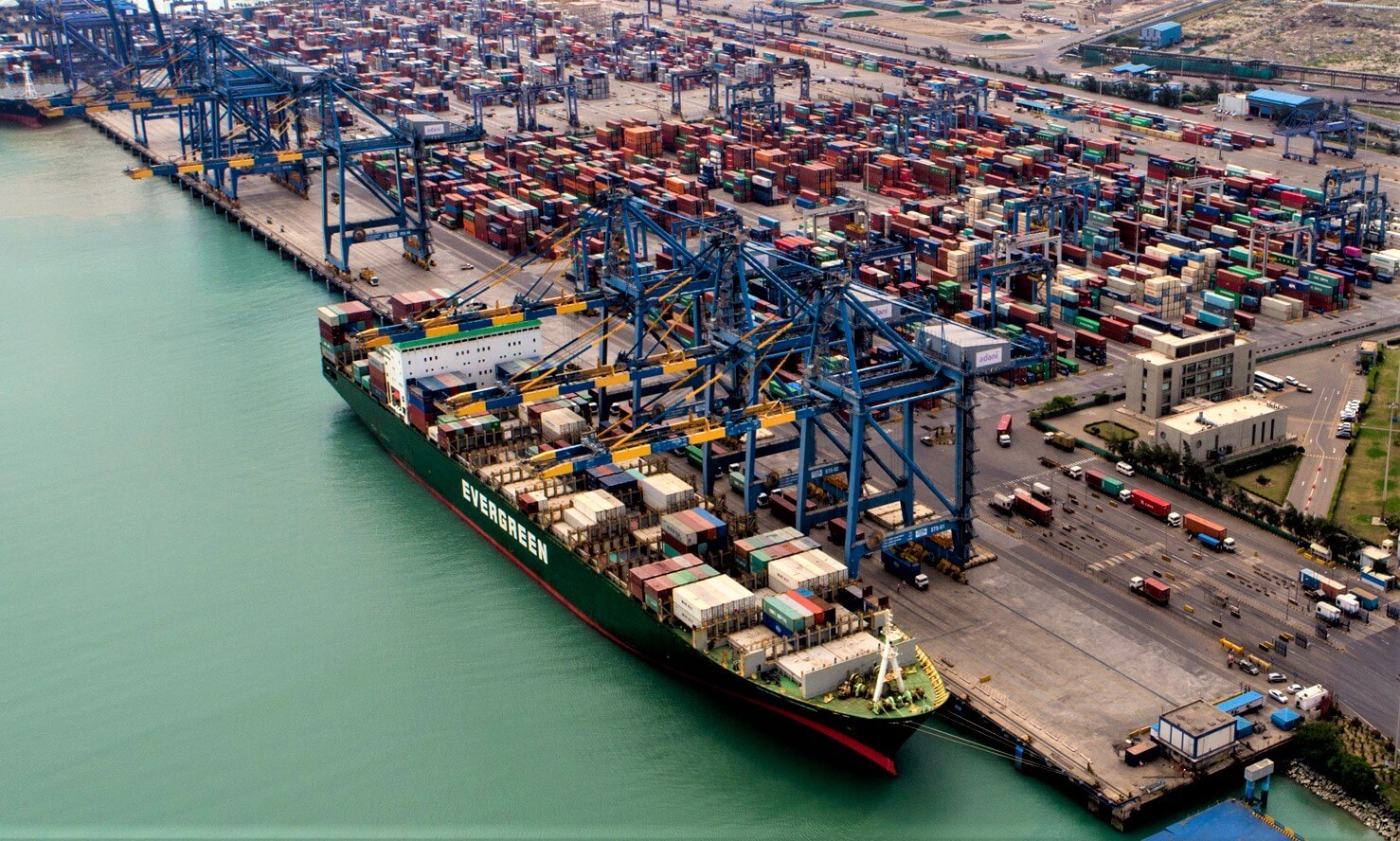
Managed under the Deendayal Port Trust, Kandla is located near Gandhidham, on the Gulf of Kutch. It is a major seaport in India and lies close to Karachi Port in Pakistan. It is currently expanding to improve the existing facilities. One of the largest imports in the region is petroleum and refined products. The primary source to Kandla is Essar Oil that supplies the Vadinar Refinery. This accounts for over 50% of the traffic through Kandla.
There are an additional 4 berths being built to accommodate ships of larger drafts and tonnage. There is a dedicated container terminal that handles lesser traffic compared to other Indian ports.
There is also an adjacent Kandla Special Economic Zone (KASEZ) that was the first SEZ to be built in Asia. It was the first export processing zone and is situated 9 kilometres from the port. It spans over 1.2 sq kilometres and is a hub for global and Indian companies.
The major exports from this port are salt, textiles, grain, and oil. The major imports are petroleum, chemicals, iron, steel, and machinery. Efforts are underway to improve the surrounding area, despite the isolation of Kandla.
7. Port of Mumbai
Mumbai, Maharashtra
UN/LOCODE: IN-BOM
Gross cargo tonnage (2017-18): 62.9 million metric tons
TEU Traffic (2017-18): 0.04 million units
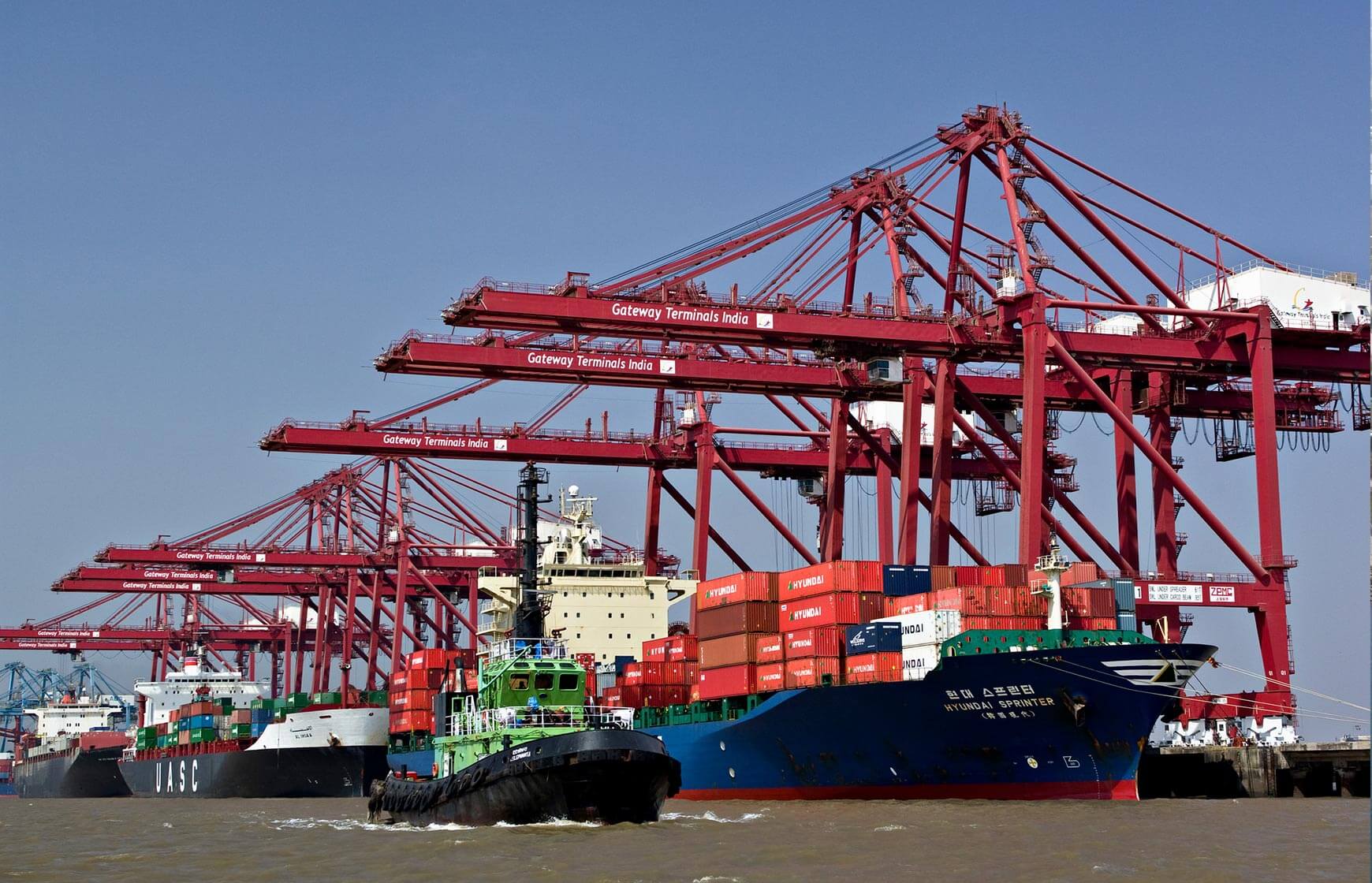
Known as the erstwhile Bombay Port Trust (BPT), Mumbai harbour is a major port in India. It is a natural deep-water seaport operated by the MbPT, and spans 400 sq kilometres. It is situated on the Arabian Sea and was opened by the British in the late 17th century. Its hinterland includes Central, Southern, and West India. At present, MbPT primarily handles bulk and general cargo, while the neighbouring Nhava Sheva port deals in container traffic. Nhava Sheva was initially opened to ease the traffic from Mumbai Port but has gradually overtaken it.
This port maintains several docks with numerous berths and wharves. The Victoria and Prince Docks operate 20 berths and are semi-tidal in nature. The Indira Dock has 21 berths and uses a lock to allow vessels to dock at all times.
There are also jetties on Jawahar Dweep to service crude and petroleum vessels inbound from the Middle East, Iran, and other nations. Liquid cargo such as chemicals is processed from the Pirpau jetty. There is also a passenger terminal at Ballard Pier Extn. A pilot is required for any vessel over 100 tons gross deadweight.
8. Port of Vishakapatnam
Vishakapatnam, Andhra Pradesh
UN/LOCODE: IN-VIZ
Gross cargo tonnage (2019-20): 72.72 million metric tons
TEU Traffic (2019-20): 0.43 million units
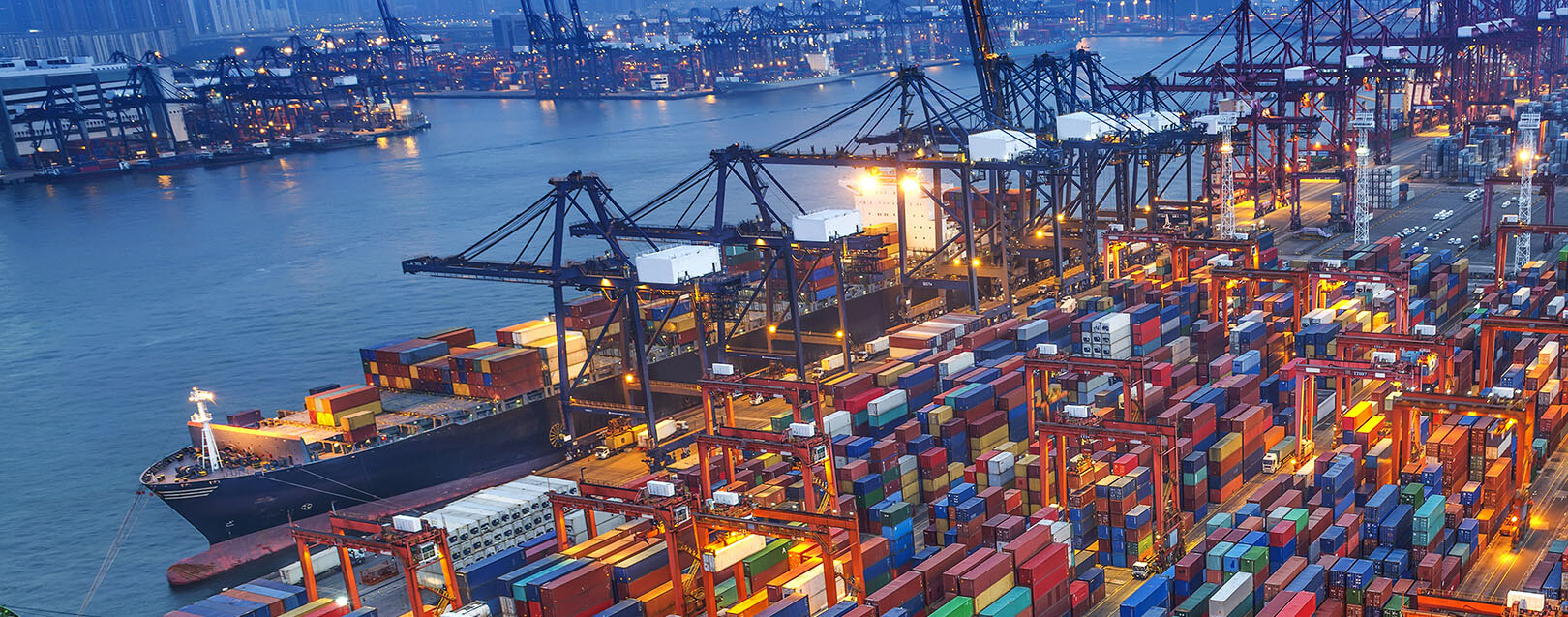
As a major port in India, it is the largest harbour in Andhra Pradesh. It is ranked 3rd in terms of cargo volume and is close to the ports of Chennai and Kolkata. Under the Vishakapatnam Port Trust (VPT), the port currently operates 24 berths. It primarily services the hinterlands of Central and South India. The main goods through here include iron ore, manganese nodules, steel products, general cargo, coal, crude oil, and other derivatives of petroleum.
There are 3 harbours that handle cargo- outer, inner, and fishing docks. The outer dock has 6 berths and is the largest dock. The smaller inner dock has 18 berths capable of handling Panamax ships. The maximum anchorage draft is 17 meters across the harbours.
Despite being prone to seasonal cyclones, the port is naturally protected by surrounding low lying hills. There is a nearby harbor- the Gangavaram Port, that shares cargo traffic with Vizag Port.
The Indian Steel Federation known as the RINL has begun operations out of Vizag. For this, the port is expanding to include coal and steel handling equipment. There are dredging operations currently underway to handle larger tonnage ships. There is also a proposal to operate a satellite port at Bhimili.
9. Port of Cochin
Kochi, Kerala
UN/LOCODE: IN-COK
Gross cargo tonnage (2018-19): 32.02 million metric tons
TEU Traffic (2018-19): 0.6 million units
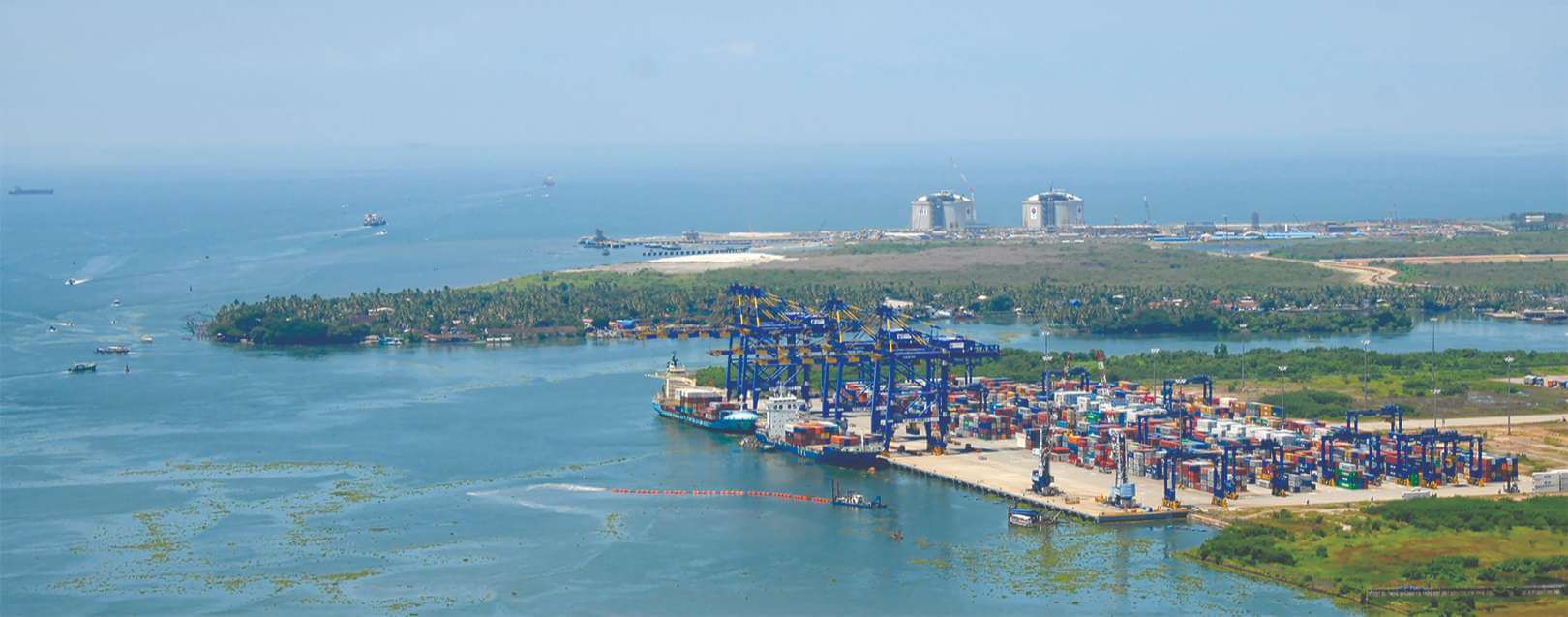
One of the largest ports in India, Kochi harbour lies on the Arabian Sea coast and experiences traffic from vessels on the Indian Ocean route. The port itself is built over 2 neighbouring islands- Willingdon and Vallarpadam. It is managed by the Cochin Port Trust (CoPT) and has been operational since 1928. The port is located close to other maritime facilities in Kochi, namely the Cochin shipyards, Kochi Refineries SPM, the Kochi Marina, and the offshore crude carrier mooring facility.
The International Container Transshipment Terminal (ICTT) is the largest container facility in India, and the port has an average of over 1,500 vessel visits annually. The inlet to the port is through the Cochin Gut between Vypeen and Fort Kochi. The inlet depth is 16 meters post dredging and can accommodate ICTT inbound vessels.
Pilotage is also provided for incoming vessels. The port supplies regions of Southern India and is well connected by rail (Indian Railways), road (National and State Highways by NHAI), and air (the nearby Kochi International Airport). There is also a naval base close to the port.
10. Port of Hazira
Hazira, Gujarat
UN/LOCODE: IN-HZA
Gross cargo tonnage (2019-20): 25.4 million metric tons
TEU Traffic (2018-19): 0.57 million units
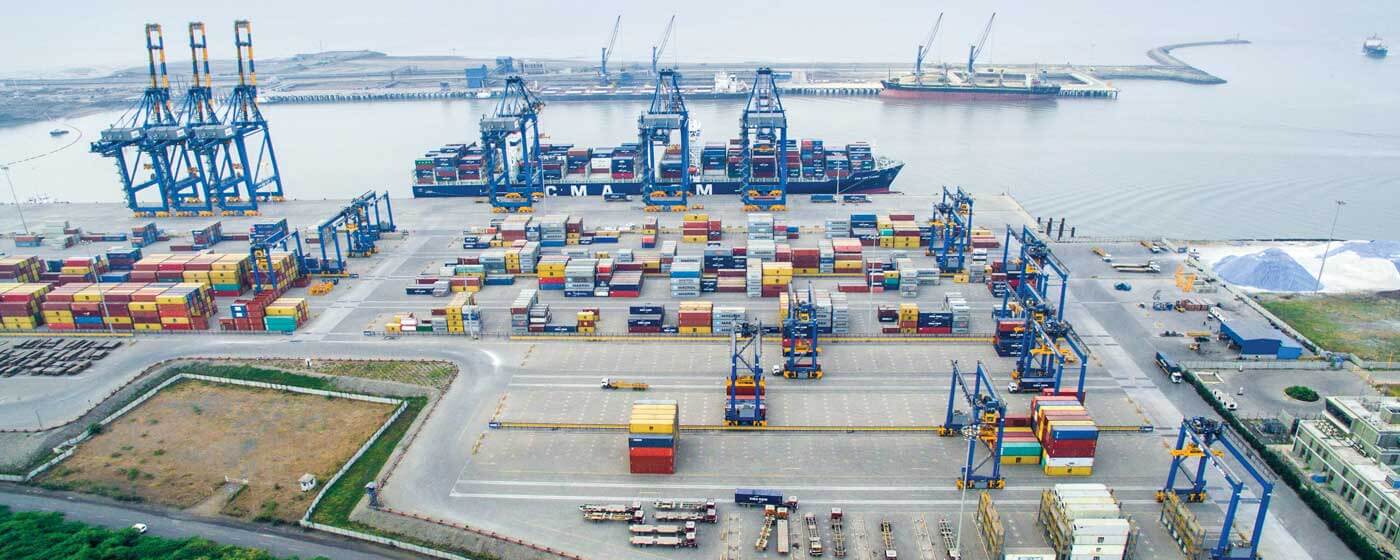
Known as Surat Port, the Adani Hazira Port is an important LNG and petroleum harbour on the Western coast of India, close to the city of Surat. It is managed and operated by Adani Hazira Port Private Limited (AHPPL). It is built to handle cargo including bulk, breakbulk, bulk liquids, chemicals, petroleum, edible oils, containers, automobiles, and crude oil. It is a highly developed port under the Adani group that operates as a multimodal hub. It deals with vessels from Europe, Africa, America, and the Middle East.
The port lies close to the Delhi Mumbai Industrial Zone and is also close to the Mumbai and Nhava Sheva Ports. Two of the major goods through Hazira are coal and petroleum products. Coal is processed by an integrated conveyor system that has mechanized the coal handling process. There are several industrial companies that operate from Hazira such as Essar, Shell, L&T, ONGC, NTPC, GAIL, and Reliance Industries.
A new container handling terminal operated by PSA International is under construction. The existing facilities can handle 1 million TEUs, while the LNG terminals run by Total SA and Shell Oil can process 2.5 million tons. There is also a small naval shipyard operated by L&T out of Hazira.
Source: Marine Insight


